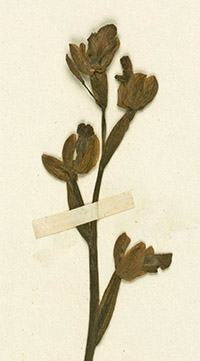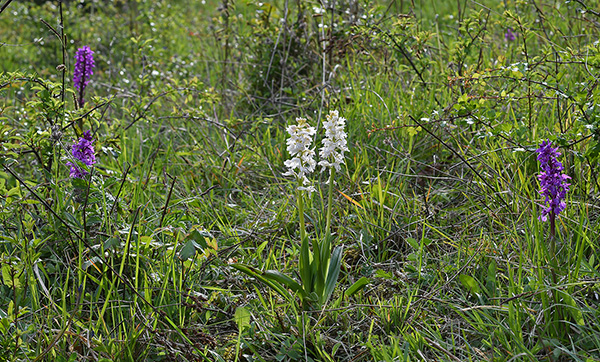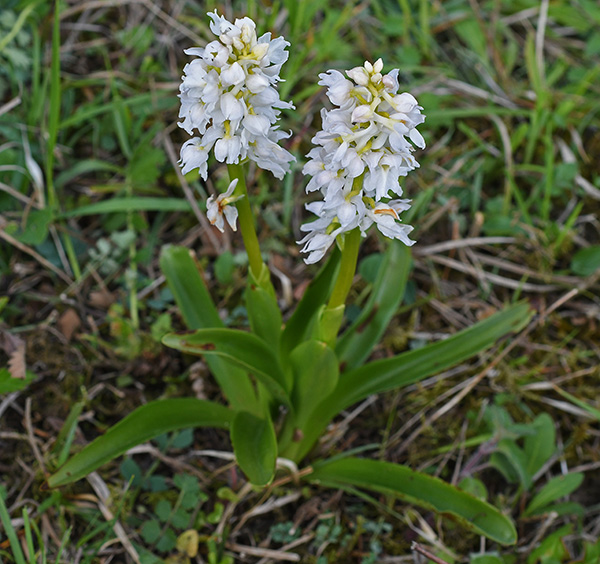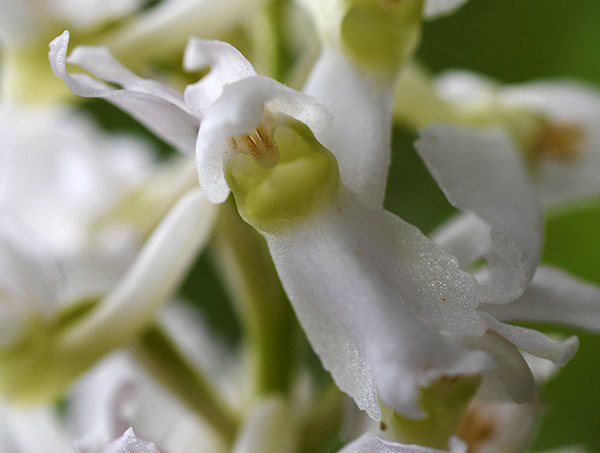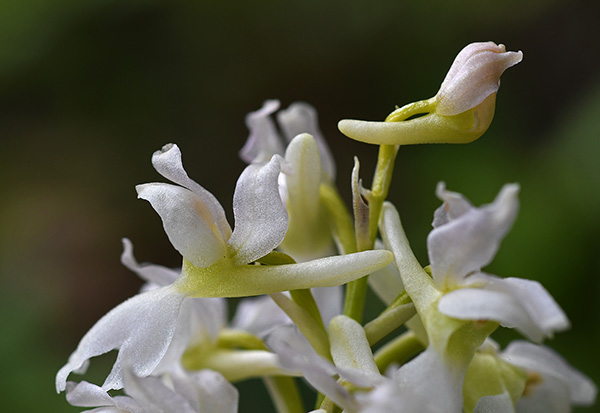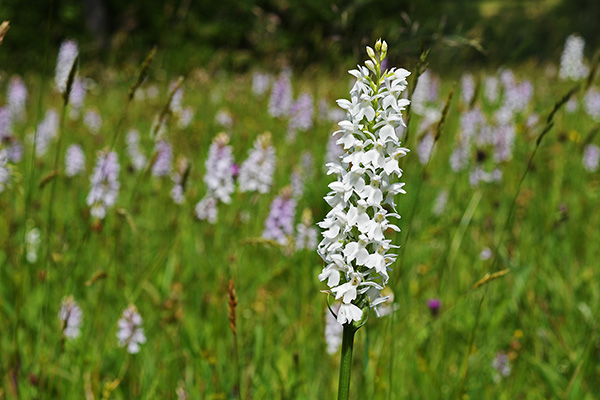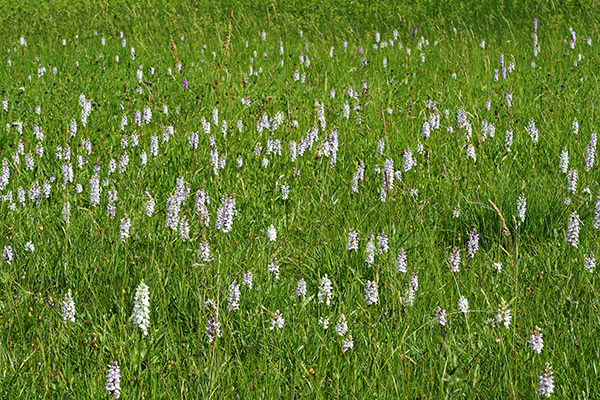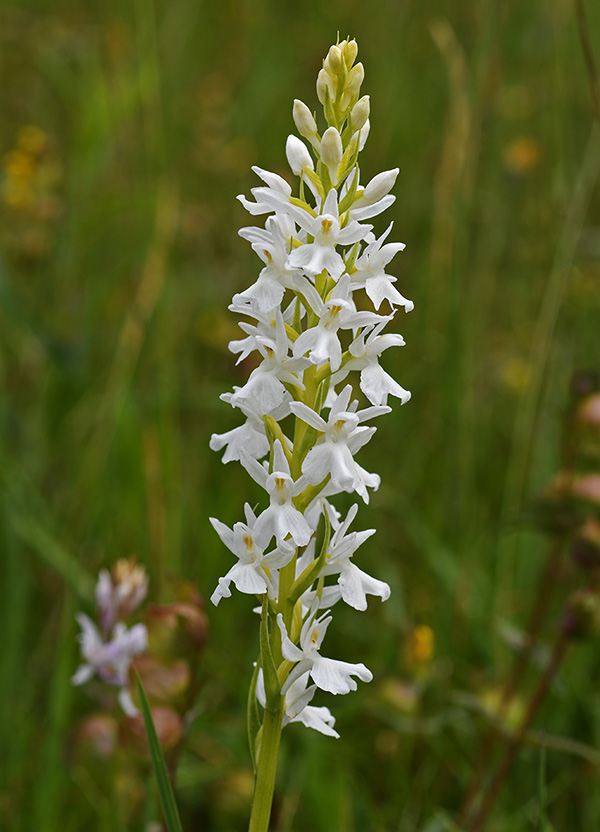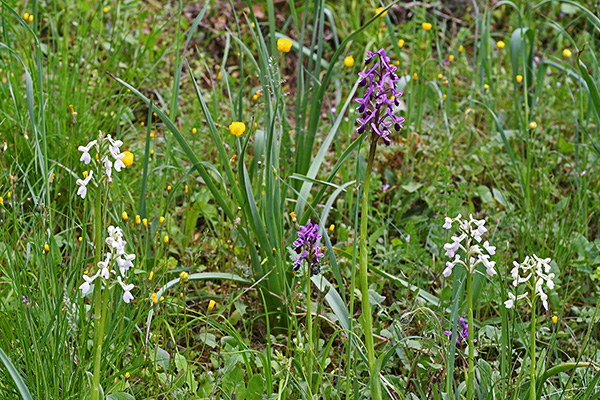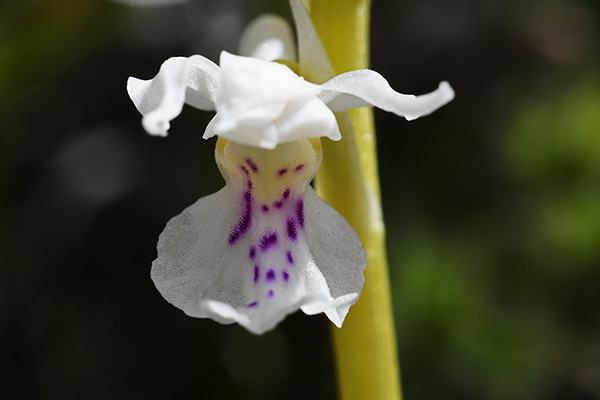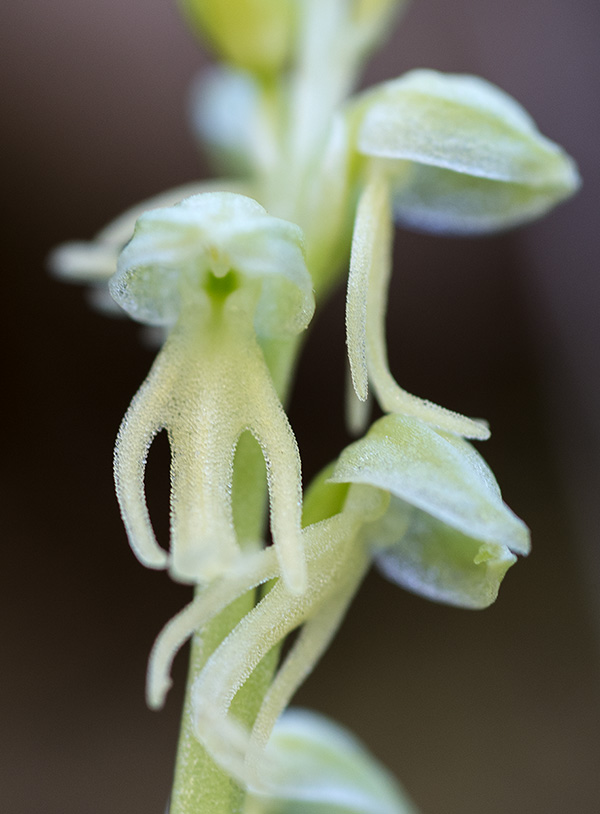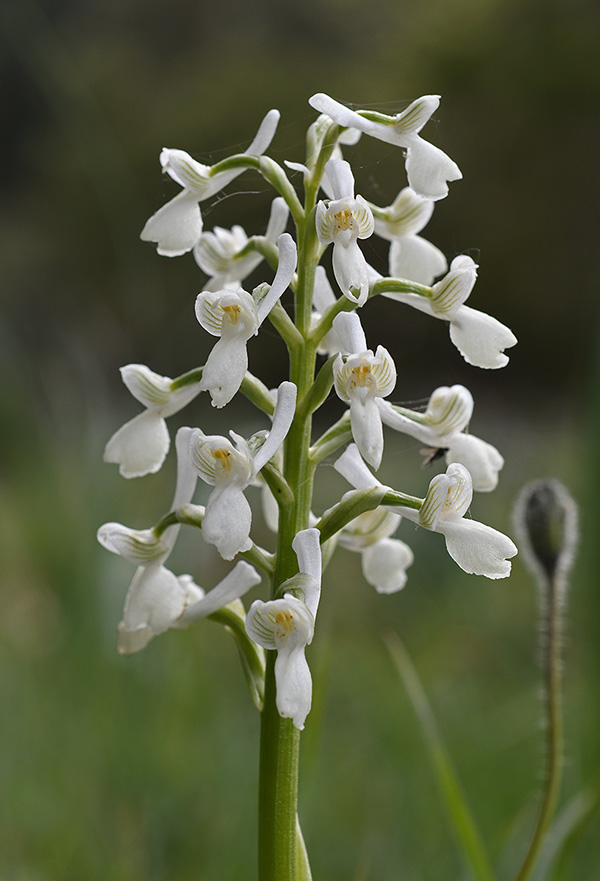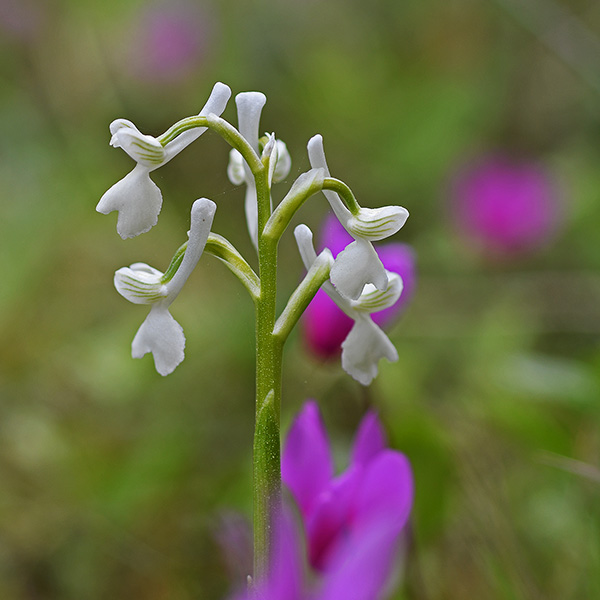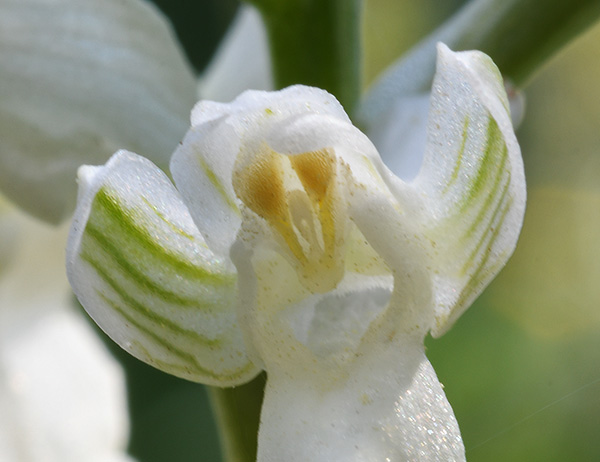Diese Hypothese entwickelt Hannes Paulus in einem Beitrag für die jüngste Ausgabe des Journals Europäischer Orchideen (Hannes F. Paulus: Zur Bestäubungsbiologie der Gattung Ophrys in Nordspanien: Freilandstudien an Ophrys aveyronensis, O. subinsectifera, O. riojana, O. vasconica und O. forestieri. J. Eur. Orchideen. 49 (3-4): 427-471).
Darin geht der Autor auf die beiden Populationen von Ophrys aveyronensis in Südfrankreich und Nordspanien ein – letztere bestimmt er als Ophrys aveyronensis subsp. vitorica. Es handelt sich um eine Art, weil beide von der Biene Andrena hattorfiana bestäubt werden.
Dabei weist Paulus darauf hin, dass diese Biene auf die Witwenblume (Knautia) spezialisiert ist. Deren pinkfarbener Blütenstand habe die gleiche Farbe wie das Perigon, also Sepalen und Petalen, von Ophrys aveyronensis. Hier merkt der Ophrys-Experte an: Es ist zu erwarten, dass dies kein Zufall ist, sondern eine Angleichung an die Hauptfutterpflanze des Bestäubers. Auch bei Knautia gebe es kräftiger pink gefärbte Blüten wie Pflanzen, die zu weiß tendierten.
Dieser Hinweis bestätigt den Ansatz, bei der Frage nach Gründen für das gehäufte Auftreten von Albiflora-Formen unterschiedlicher Orchideenarten in bestimmten Regionen auf die Begleitflora an den jeweiligen Standorten zu achten.



